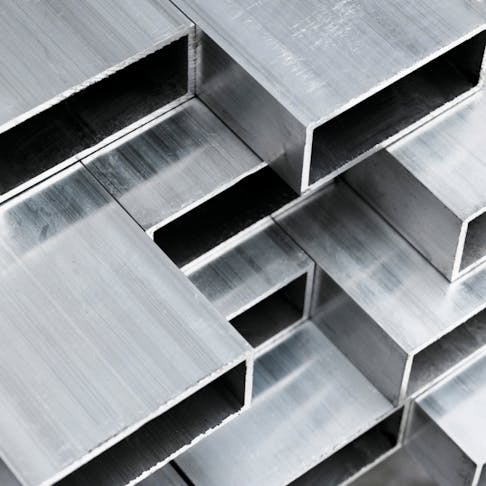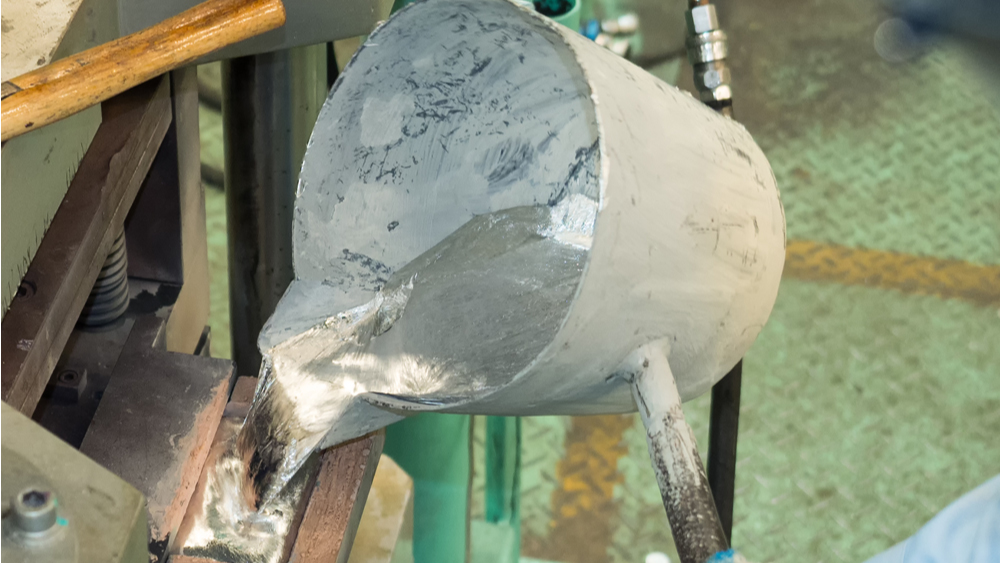Ensuring precision in aluminum casting production
Understanding the Procedures Included in Aluminum Casting for High-Quality Production
The aluminum casting procedure is a complicated yet important procedure for attaining premium production. It includes numerous phases, including mold and mildew prep work, melting, pouring, and air conditioning. Each step requires cautious attention to detail to stay clear of problems and ensure uniformity. Comprehending these treatments can substantially affect the last item's honesty. As one examines the subtleties of mold choice and cooling methods, the relevance of each aspect becomes increasingly clear. What elements truly dictate success in this detailed procedure?

The Aluminum Casting Process Summary
The aluminum casting process is a widely utilized production technique that changes molten aluminum into different forms and components. This procedure starts by heating aluminum until it gets to a liquid state, allowing it to stream easily right into molds. Depending on the desired output, various casting approaches can be employed, consisting of sand casting, die casting, and investment casting. Each technique has its special benefits and applications, affecting variables such as production quantity, dimensional precision, and surface area finish.
Once the aluminum is put into the mold, it cools down and strengthens, handling the shape of the dental caries. After cooling, the cast item is eliminated from the mold and mildew, typically needing additional procedures like trimming, machining, or surface area therapy to accomplish the last specifications. In general, the aluminum casting procedure is important in producing resilient and intricate components for various sectors, consisting of automotive, aerospace, and durable goods.
Preparing the Mold And Mildew for Casting

Mindful preparation also involves cleaning the mold to get rid of any type of pollutants that might impact the casting procedure. An extensive examination warranties that all parts fit together properly, protecting against misalignments during putting. Additionally, using a launch representative can assist alleviate the removal of the ended up item.
Ultimately, meticulous attention to detail during mold and mildew preparation sets the structure for an effective casting procedure, affecting elements such as dimensional accuracy and surface area quality of the aluminum parts created.
Melting and Putting Aluminum
Effective melting and pouring of aluminum is important for accomplishing high-quality castings. The procedure starts by choosing the appropriate heating system, which should offer reliable warm transfer and keep regular temperature levels. Different types of furnaces, such as induction or crucible heaters, can be made use of based on manufacturing requirements and volume.
The aluminum needs to be heated to its melting point, usually around 660 degrees Celsius (1220 levels Fahrenheit), while guaranteeing very little oxidation and contamination. To enhance quality, additives may be presented to improve fluidity and minimize pollutants. As soon as fully thawed, the aluminum should be held at a stable temperature prior to putting.
Pouring needs accuracy to stay clear of problems such as air pockets or incorporations. The use of pouring ladles and controlled pouring strategies contributes to a smooth flow into the mold and mildew. Appropriate implementation of these steps is important for generating castings with maximum structural honesty and surface coating.
Cooling and Solidification Strategies
After pouring, the air conditioning and solidification of aluminum play an essential duty in determining the final residential or commercial properties of the casting (Aluminum Casting Company). Effective air conditioning techniques directly influence the microstructure, mechanical residential properties, and dimensional precision of the last product. Typical techniques consist of compelled air cooling and water spray, which promote uniform temperature circulation and lessen thermal slopes
The solidification process starts as the liquified aluminum sheds warmth, changing from fluid to solid. The rate of cooling down affects grain dimension; slower cooling can result in bigger grains, potentially decreasing toughness. Additionally, making use of chills-- steel inserts that soak up warm-- can boost cooling rates in details locations, boosting general honesty.
Controlled cooling down systems are often executed to attain my company preferred residential properties, such as improved ductility or strength, by taking care of the air conditioning curve. Appropriate methods guarantee reliable aluminum castings that meet strict market requirements.
Ending Up and Quality Assurance Steps
Ending up and high quality control actions are vital to guarantee that aluminum castings fulfill the needed specifications and performance criteria. After the casting process, components undergo different completing operations, including machining, grinding, and polishing. These procedures improve surface area high quality, dimensional precision, and general aesthetics.
Quality assurance actions play a crucial role in assuring product stability. Assessment methods such as visual assessments, dimensional checks, and non-destructive screening are used to recognize issues like porosity, surface abnormalities, or dimensional errors. Furthermore, detailed paperwork of each stage of manufacturing assists trace any issues back to their resource, enabling continuous renovation.
Employing analytical procedure control (copyright) additional assurances that manufacturing procedures continue to be within specified limitations, enhancing uniformity and integrity. By incorporating ending up methods and strict top quality control measures, makers can achieve top notch aluminum spreadings that fulfill both sector standards and consumer expectations.
Regularly Asked Concerns
What Sorts Of Aluminum Alloys Are Best for Casting?
The very best aluminum alloys for casting consist of 319, 356, and 413, known for their superb fluidness, deterioration resistance, and toughness - Aluminum Casting Company. These alloys are generally used in automobile, aerospace, and various industrial applications for resilient components
Just How Does Temperature Level Affect Aluminum Casting High Quality?
Temperature significantly affects aluminum casting quality; higher temperatures can enhance fluidity however might lead to click this oxidation, while lower temperatures boost information yet boost viscosity. Accomplishing suitable temperature levels is necessary for stabilizing these opposite impacts during casting.
What Prevail Flaws in Aluminum Castings?
Typical problems in aluminum spreadings include porosity, shrinking, inclusions, chilly shuts, and surface roughness. These concerns emerge from elements such as incorrect temperature level control, contamination, and Visit Your URL insufficient mold style, influencing the end product's honesty and performance.
Can Aluminum Casting Be Recycled?

Just How Does Aluminum Casting Compare to Various Other Manufacturing Methods?
Aluminum casting offers exceptional design flexibility and product performance contrasted to techniques like creating or machining. Aluminum Foundry. Its capacity to generate complex shapes decreases waste, enhancing total production performance while preserving premium requirements in completed items
The aluminum casting procedure is a facility yet vital treatment for achieving high-quality manufacturing. The aluminum casting process is a widely used production method that changes liquified aluminum right into various forms and parts. Preparing the mold for casting is an important action that directly impacts the quality of the last aluminum product. Finishing and high quality control actions are necessary to ensure that aluminum castings meet the required specifications and performance criteria. Temperature substantially affects aluminum casting quality; greater temperature levels can boost fluidness but may lead to oxidation, while reduced temperatures enhance information yet rise thickness.